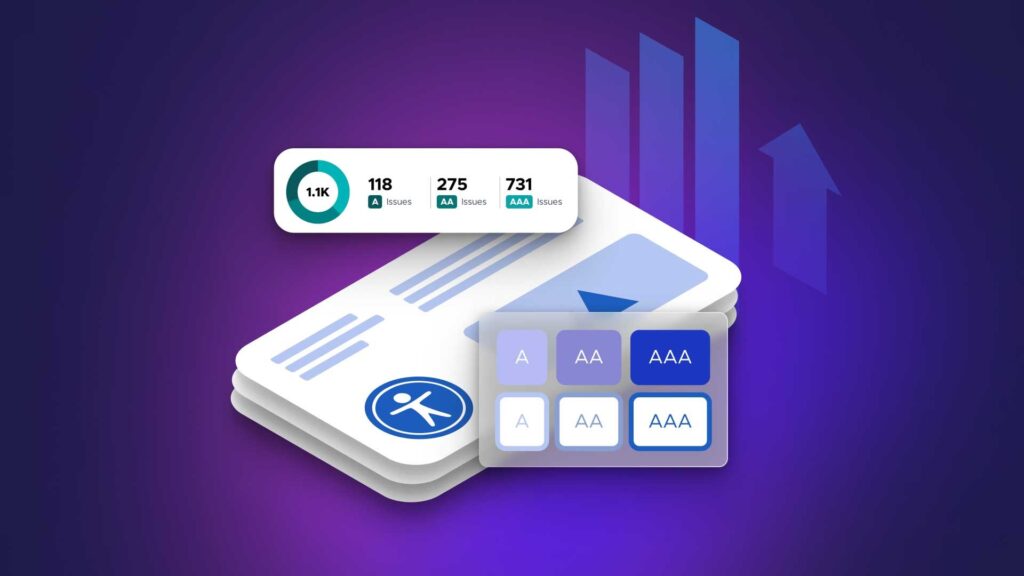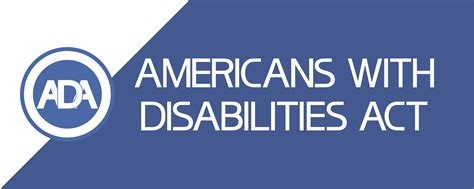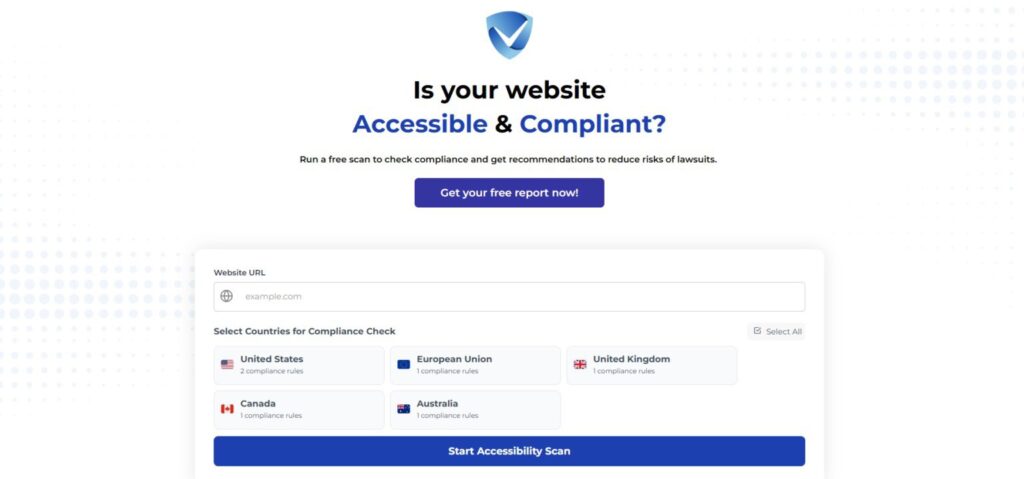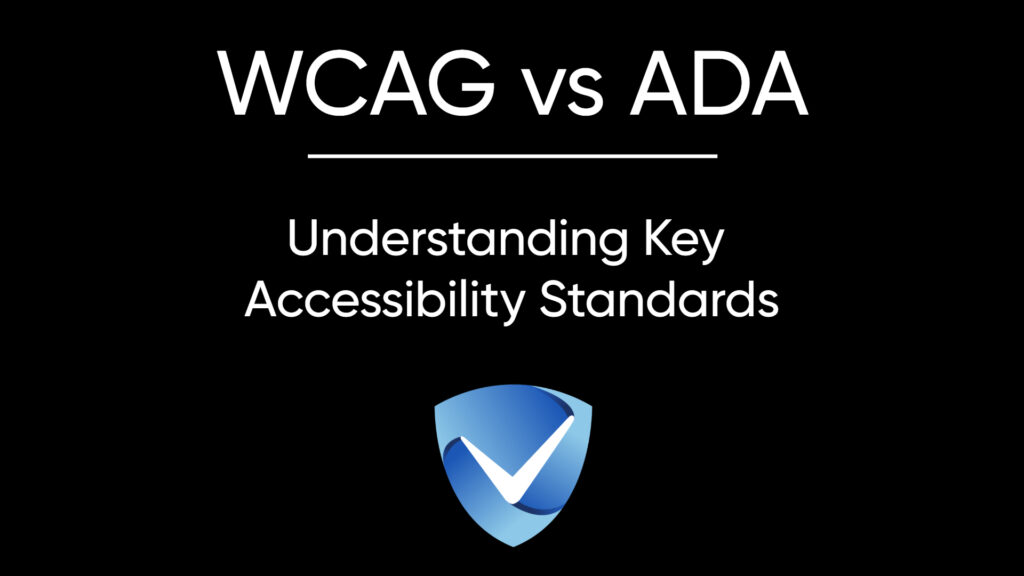Overview of WCAG Guidelines
The Web Content Accessibility Guidelines (WCAG) serve as a set of internationally recognized standards aimed at making web content more accessible to individuals with disabilities. Established by the World Wide Web Consortium (W3C), WCAG was first introduced in 1999 and has undergone several updates to address the evolving needs of users and advancements in technology. The initial iteration laid the foundational principles for accessibility on the web, promoting an inclusive online experience for all users, regardless of their physical or cognitive abilities.
The guidelines fall under several key principles — perceivable, operable, understandable, and robust (POUR) — which provide a framework for designers and developers. By adhering to these principles, web content can be created in a manner that is easily perceived by users with diverse needs. For instance, the perceptibility aspect ensures that information is presented in ways that can be easily consumed, whether it be through text, audio, or visual formats. Meanwhile, operable addresses the need for users to navigate web content with ease, using various assistive technologies if required.
Over the years, WCAG has evolved to incorporate new techniques and considerations, including mobile accessibility, user interface adjustments, and enhanced compatibility with technologies such as screen readers. Its periodic updates reflect the growing understanding of diverse user needs and the technological landscape. As a result, compliance with WCAG guidelines has become increasingly essential not only for legal obligations but also for fostering an inclusive web environment. Organizations worldwide are recognizing the significance of these guidelines, not only to cater to users with disabilities but to enhance the overall usability of their websites for everyone.

History and Purpose of WCAG
The Web Content Accessibility Guidelines (WCAG) were developed by the World Wide Web Consortium (W3C) as a crucial response to the increasing necessity for web accessibility. Established in 1994, the W3C aimed to ensure that the internet would be universally accessible to all individuals, particularly those with disabilities. The publication of WCAG 1.0 in 1999 marked a seminal moment in shaping web standards that prioritize accessibility. This initial version laid the groundwork, providing a framework of guidelines to assist web developers in making digital content accessible.
As technology evolved, so did the WCAG; thus, WCAG 2.0 was introduced in 2008, expanding the scope of accessibility guidelines to accommodate the diverse range of disabilities users might face. The focus shifted towards a more comprehensive approach that considers various disabilities—including visual, auditory, physical, speech, cognitive, language, learning, and neurological disabilities. The guidelines also emphasized the importance of not only providing access to content but enhancing the user experience for individuals with these disabilities.
The most recent iteration, WCAG 2.1, was published in 2018 and further refined the guidelines to address the needs of mobile device users and those with low vision challenges. Each version of the WCAG has prioritized the importance of inclusivity in digital environments, ultimately fostering an accessible web that aligns with legal mandates and societal norms. The guidelines serve as a fundamental resource, helping developers adhere to best practices when creating content that is not only functional but also accessible to everyone. In conclusion, the WCAG has played an instrumental role in promoting digital accessibility standards, ensuring that the internet remains a welcoming space for all users, regardless of their individual challenges.
Recent Updates in WCAG 2.2
Launched in October 2023, the recent updates to the Web Content Accessibility Guidelines (WCAG) represent a vital development in creating a more inclusive web environment. The most significant changes in WCAG 2.2 focus on new success criteria aimed at enhancing web accessibility for users with diverse needs. These updates respond to the evolving landscape of digital accessibility and underscore the necessity of adhering to established standards.
One notable addition is the introduction of consistent help mechanisms. This criterion mandates that websites implement reliable and predictable assistance features, ensuring users can navigate through digital platforms with ease. By providing users with consistent guidance, organizations can significantly minimize confusion and enhance the overall user experience. This update is particularly beneficial for individuals with cognitive disabilities who may struggle with varied assistance options.
Another important success criterion involves redundant entry requirements. This measure ensures that users are not forced to input the same information multiple times when navigating web forms or other interactive features. By allowing alternatives in how users submit data, these adjustments cater to users with mobility challenges or those who may utilize assistive technologies. Overall, a more streamlined interaction model fosters broader access to information and services online.
Finally, the update introduces specific guidelines regarding target size for interactive elements, such as buttons and links. The new requirement emphasizes a minimum size for touch targets to prevent unintentional selections, making it easier for users with limited dexterity to engage with web content. The WCAG 2.2 updates effectively address the varying abilities of users, promoting more accessible digital experiences.
Overall, these recent enhancements in WCAG 2.2 illustrate a commitment to improving accessibility standards, ensuring that digital spaces accommodate all users regardless of their capabilities.

Overview of ADA Requirements
The Americans with Disabilities Act (ADA) is a significant piece of legislation in the United States that was enacted in 1990. Its primary objective is to prevent discrimination against individuals with disabilities, ensuring equal opportunities in various aspects of public life, including employment, education, transportation, and public accommodations. The law was designed to eliminate barriers that hinder the participation of people with disabilities in society, thereby promoting inclusivity and equality.
Initially, the ADA focused on physical accessibility within buildings and public spaces. However, as technology evolved, especially with the proliferation of the internet, the scope of the ADA’s applicability began to broaden. Titles II and III of the ADA have become increasingly relevant in the context of digital accessibility. Title II pertains to public entities and mandates that state and local governments provide accessible services, programs, and facilities, which now includes compliance for digital tools and online content. Title III, conversely, applies to private businesses and places of public accommodation, requiring these entities to ensure their websites and digital platforms are accessible to individuals with disabilities.
The requirement for websites to be accessible means that organizations must adopt measures to accommodate users with various disabilities, such as visual impairments, mobility challenges, and cognitive difficulties. This shift emphasizes the necessity for digital accessibility, highlighting that failing to provide accessible digital content can lead to discrimination claims under the ADA. As a result, companies are urged to adhere to established guidelines, including the Web Content Accessibility Guidelines (WCAG), to guarantee that their online presence is both inclusive and compliant with ADA requirements. The ongoing evolution of the ADA’s application to the digital realm reflects a growing recognition of the importance of accessibility in all aspects of modern life.
Digital Accessibility Under the Americans with Disabilities Act
The Americans with Disabilities Act (ADA), enacted in 1990, was designed to eliminate discrimination against individuals with disabilities in various areas, including employment, public accommodations, and transportation. Although the ADA does not explicitly mention digital accessibility, its principles extend to digital platforms, requiring that these entities provide equal access to their services for all users. This necessity arises from the increasing reliance on technology in everyday life, where websites and online services play a crucial role in facilitating access to information, goods, and services.
Businesses and public entities are thus mandated to ensure that their digital content is accessible to individuals with disabilities. This mandate includes compliance with certain accessibility measures, such as providing text alternatives for non-text content, ensuring keyboard navigation, and maintaining compatibility with assistive technologies. As a result, organizations must actively assess and update their digital properties to meet these requirements, thereby fostering inclusion and increasing usability for all individuals.
In litigation surrounding disability rights, courts frequently reference the Web Content Accessibility Guidelines (WCAG) to determine compliance with the ADA. These guidelines, developed by the World Wide Web Consortium (W3C), provide a robust framework for evaluating the accessibility of web content. The relationship between the ADA and WCAG reflects an evolving understanding of what constitutes accessibility in a digital context. As federal courts increasingly align with WCAG standards, organizations are prompted to implement these guidelines to reduce legal risk while enhancing accessibility.
In essence, understanding the implications of the ADA in relation to digital accessibility is essential for businesses and public entities. By prioritizing compliance with the ADA and adopting WCAG standards, organizations not only fulfill their legal obligations but also contribute to a more inclusive digital landscape for individuals with disabilities.
Key Differences Between WCAG and ADA Standards
The Web Content Accessibility Guidelines (WCAG) and the Americans with Disabilities Act (ADA) are two essential frameworks aimed at enhancing accessibility for individuals with disabilities. However, they have distinct characteristics and applications that are important to understand. WCAG is an internationally recognized technical standard developed by the World Wide Web Consortium (W3C). It provides guidelines for creating accessible web content, focusing on various aspects such as visual, auditory, and cognitive accessibility. As a result, WCAG serves as a comprehensive resource for web developers and designers globally, striving to promote inclusivity across diverse digital environments.
On the other hand, the ADA functions as a federal law in the United States that prohibits discrimination against individuals with disabilities. While it does not specifically mention web accessibility, court rulings have established that websites are considered places of public accommodation, thus falling under ADA regulations. This alignment means organizations must ensure their online platforms are accessible to avoid legal ramifications. Unlike WCAG, which is designed to be adopted voluntarily and offers a set of best practices, the ADA mandates adherence, resulting in specific legal obligations for U.S.-based entities.
Moreover, the enforcement mechanisms differ significantly between the two standards. WCAG compliance is often encouraged through industry best practices and can be voluntarily adopted by organizations striving for inclusivity. In contrast, non-compliance with the ADA can lead to legal actions, fines, and penalties as it is legally binding. Understanding these key differences between WCAG and ADA standards is crucial for entities seeking to promote accessibility. Compliance with WCAG can serve as an effective approach to meet ADA obligations while fostering a more inclusive environment for people with disabilities.

How Businesses Can Align with Both Standards
To effectively align with both the Web Content Accessibility Guidelines (WCAG) and the Americans with Disabilities Act (ADA) standards, businesses must adopt a comprehensive approach to accessibility. The first step involves conducting thorough accessibility audits. These audits help identify potential barriers that individuals with disabilities may encounter when interacting with digital content. By assessing both website and mobile application functionalities, businesses can pinpoint areas that require immediate attention.
Once the audit is completed, organizations should focus on adopting WCAG guidelines. The guidelines provide a robust framework to enhance web accessibility by setting forth a series of measurable criteria. By implementing these standards, businesses can significantly improve the usability of their digital platforms for individuals with varying disabilities while ensuring compliance with the ADA.
In addition to technical adjustments, it is crucial for businesses to stay updated on their legal obligations concerning accessibility. Regularly reviewing current regulations and seeking legal counsel can mitigate potential risks associated with noncompliance. Lawsuits related to accessibility issues are on the rise, making it imperative for organizations to remain proactive.
Training team members on accessibility practices is another vital step. Providing comprehensive training sessions equips staff with the knowledge and tools necessary to create inclusive content. This knowledge fosters a culture of accessibility within the organization, ensuring that all digital products are designed with consideration for users with disabilities.
Finally, businesses should consider collaborating with accessibility experts. These professionals can provide valuable insights and actionable recommendations, enhancing an organization’s capacity to develop accessible digital experiences. By employing these strategies, businesses can not only align with both WCAG and ADA standards but also cultivate an inclusive environment that values diversity.
Try Our Free Website Accessibility Scanner

In the realm of web accessibility, understanding the distinctions between the Web Content Accessibility Guidelines (WCAG) and the Americans with Disabilities Act (ADA) is essential for organizations looking to create inclusive digital spaces. The WCAG provides a comprehensive technical framework aimed at improving the usability of web content for individuals with various disabilities. This set of guidelines outlines specific criteria that developers, designers, and content creators can follow to enhance accessibility and ensure that information is perceivable, operable, understandable, and robust for all users.
On the other hand, the ADA functions as a legal framework governing access to services, programs, and activities offered by public entities and private businesses. It requires that these organizations take necessary steps to eliminate barriers that could impede individuals with disabilities. While the ADA does not explicitly mention web accessibility, various court rulings have established its applicability to digital environments, reinforcing the importance of aligning web practices with ADA standards.
Businesses must recognize that adhering solely to one set of standards may not suffice. To foster an inclusive online experience, organizations should integrate the technical recommendations of the WCAG while simultaneously complying with the ADA’s legal mandates. This dual approach not only protects organizations from potential legal challenges but also reflects a commitment to social responsibility and equality. By prioritizing accessible practices that benefit all users, businesses can navigate the complexities of accessibility compliance, ultimately creating a more inclusive digital landscape that welcomes everyone, regardless of ability.
Resources for Further Reading
For those interested in exploring the intricate aspects of web accessibility compliance, we recommend delving into a variety of resources that provide comprehensive insights into the WCAG and ADA standards. These resources will not only enrich your understanding but also guide you towards implementing effective accessibility strategies.
One highly regarded resource is the official World Wide Web Consortium (W3C) website, which offers in-depth information about the Web Content Accessibility Guidelines (WCAG). These guidelines serve as an essential framework for creating accessible web content and can be accessed at W3C WCAG Quick Reference. The website also features a myriad of tutorials and updates that are crucial for maintaining compliance with evolving standards.
For American Disabilities Act (ADA) related information, the U.S. Department of Justice provides insights on regulations and requirements for digital accessibility. Their website can be found at ADA.gov, where you will find guidelines, technical assistance materials, and answers to frequently asked questions about ADA compliance.
Another valuable resource is the AccessibilityOz website, which specializes in providing training on accessibility testing and compliance. They offer workshops and informative articles designed to help organizations understand and navigate various accessibility challenges.
Additionally, consider subscribing to newsletters and journals focused on web accessibility, such as the A11Y Project, which features articles and resources curated to keep you informed about the latest practices and technologies in accessibility.
By engaging with these resources, you will not only enhance your knowledge but also contribute to fostering inclusive digital environments that are accessible to all users.



